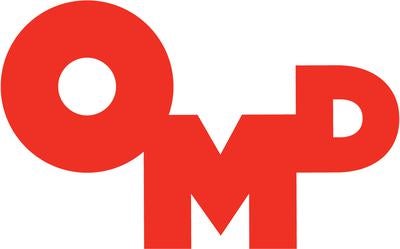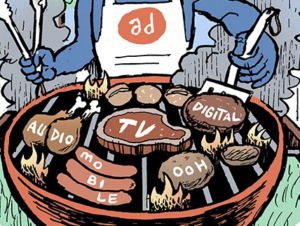OMD Worldwide’s Ben Hovaness will be speaking at AdExchanger’s Programmatic I/O conference September 23-24 in New York City. Click here to register.
Net neutrality activists have long championed the ideal of a free and open internet, allowing users equal, unfettered access to content available online.
But for advertisers, “open internet” has become a bit of a dirty phrase, synonymous with imprecise attribution, low-quality or even fraudulent inventory and diminishing return on ad spend.
It’s gotten so bad that The Trade Desk recently rebranded its open content “premium internet.” (It claims walled gardens are the real reason for low-grade ad inventory.)
But Ben Hovaness, chief media officer of media comms agency OMD Worldwide, thinks the advertising world might be thinking about this particular investment channel the wrong way, right down to the terminology we use to describe it.
AdExchanger spoke with Hovaness about what we’re getting wrong about the open web.
AdExchanger: What would you define as the “open internet”?
BEN HOVANESS: A lot of the time when people say “open internet,” what they really mean is the “open web,” which is not quite the same thing.
When I think of the open web, I think of non-paywalled publishers who are largely monetizing on the basis of selling ads either directly or programmatically.
Would you define the “open internet” and “open web” differently, then?
I would, because “the web” refers to websites, and “internet” refers to anything using internet protocol to send data. If I’m watching Disney Plus through an app on my TV, by definition it can’t be the web, because it’s not a website.
Now, some people debate whether or not that use case would be considered an example of the “open internet.” Some people would say it is, because Disney sells their ad programmatically through a federated protocol, so you can access it through multiple DSPs. The counter argument would be, “How could it be open if you need a subscription to access the content?”
I can see both sides of that, because that would be closed from a consumer perspective but open from an advertiser perspective. It really just comes down to your evaluative lens.
What place does the open web currently have in programmatic advertising?
I would say that it’s a shrinking portion of the programmatic world, just because of the growth of other aspects of programmatic advertising.
In-app inventory has been growing steadily for many years. More recently, CTV programmatic inventory has been growing, and now we see new trends like increases in programmatic streaming audio advertising and increases in digital out-of-home advertising, both of which can be purchased programmatically.
What are the current challenges in buying ads on the open web?
I think a big challenge that everybody knows about is signal loss.
Earlier this year, when Google announced that they were going to be halting their plans to deprecate third party cookies entirely, they said they’re going to shift to an approach that’s grounded in user consent. Our speculation is that they’re probably going to do something similar to what Apple did with IDFA back in 2021, which is basically changing it to a user opt-in.
If and when that happens, cookie availability in Chrome will plummet. So if you take that expectation and combine it with the existing cookie deprecation in Safari, you can see a world where there’s just much less individually targetable advertising available in browsers in the future.
You’ve talked in the past about the importance of having control over ad adjacency, which is harder to do on the open web. Where do you think we are with that?
I think one strength of the programmatic ecosystem is that it’s federated and open, so companies can roll out tools and solutions that can then integrate with DSPs in other parts of the ecosystem to combat things that advertisers don’t want to see.
In programmatic advertising, we already have the ability to specify down to the individual page level where ads can and cannot show up, and we have automated tools to drive the assessment of inventory, meaning web pages that then drive that process.
It’s a little bit different in the walled garden world, where you’re more dependent on capabilities being rolled out by individual platforms, as Meta and some others have done over the last few years.
How do you see things changing for the open web in one year, five years, maybe 10 years down the line?
If unconsented identifying information is not long for this world, then, if we want publishers to continue to thrive, we need some other means of better matching individuals with ads they’re likely to engage with.
Omnicom was the first agency holding company to endorse UID2, which is the interoperable privacy-safe identifier that is being espoused by The Trade Desk. Right now, UID2 has a lot of room for growth, but our hope and expectation is that, as cookies continue to fade away, publishers will have a greater incentive to integrate UID2 into their sites.
From an advertising perspective, do you believe the open web is worth investing in long term?
Absolutely. The question is, can it deliver on our client business objectives?
One of the things that we believe at OMD is that all media is performance media. That’s not to say that everything needs to be focused on driving an ROI, but the performance of all media needs to be measured for whatever the appropriate metric is.
As long as we can find ways to deliver value for clients out of open web investments, we’ll continue to do so, and our hope and expectation is that will continue for the foreseeable future.
This interview has been edited and condensed.
For more articles featuring Ben Hovaness, click here.
















